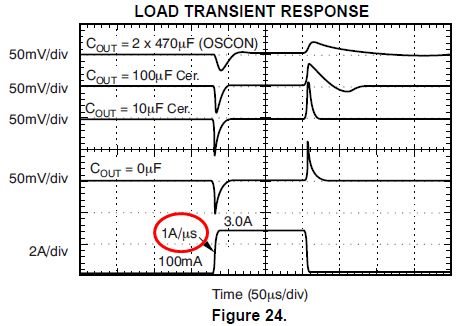Hi All,
Can you confirm the slew rate condition at load transient response in datasheet? Or please let us know the typical setting or equipment that is used at testing for SVA LDO If it's difficult to confirm the exact condition.
Best Regards,
Sonoki / Japan Disty



